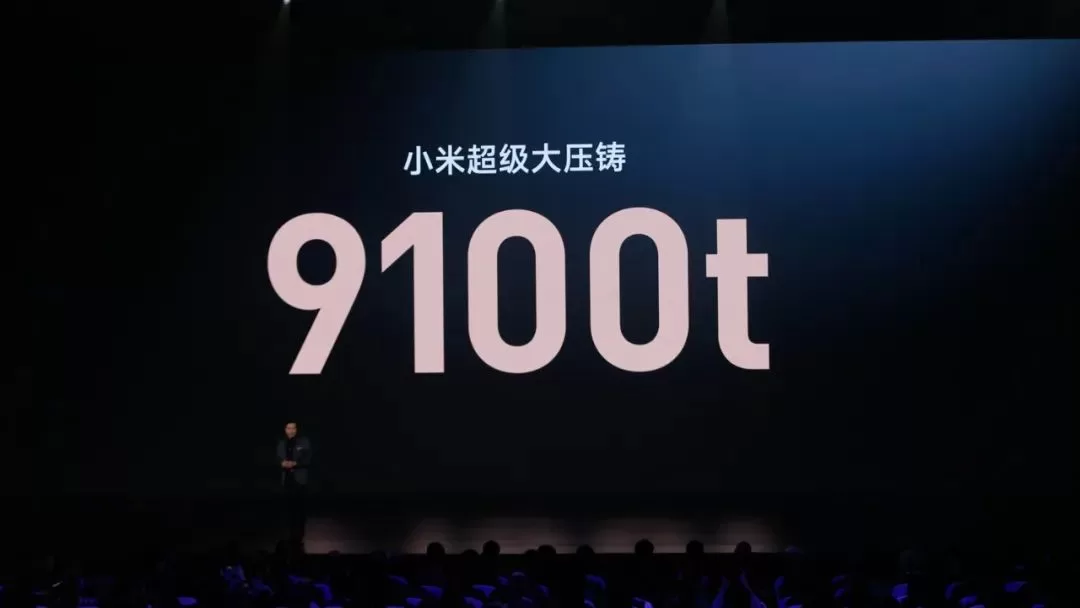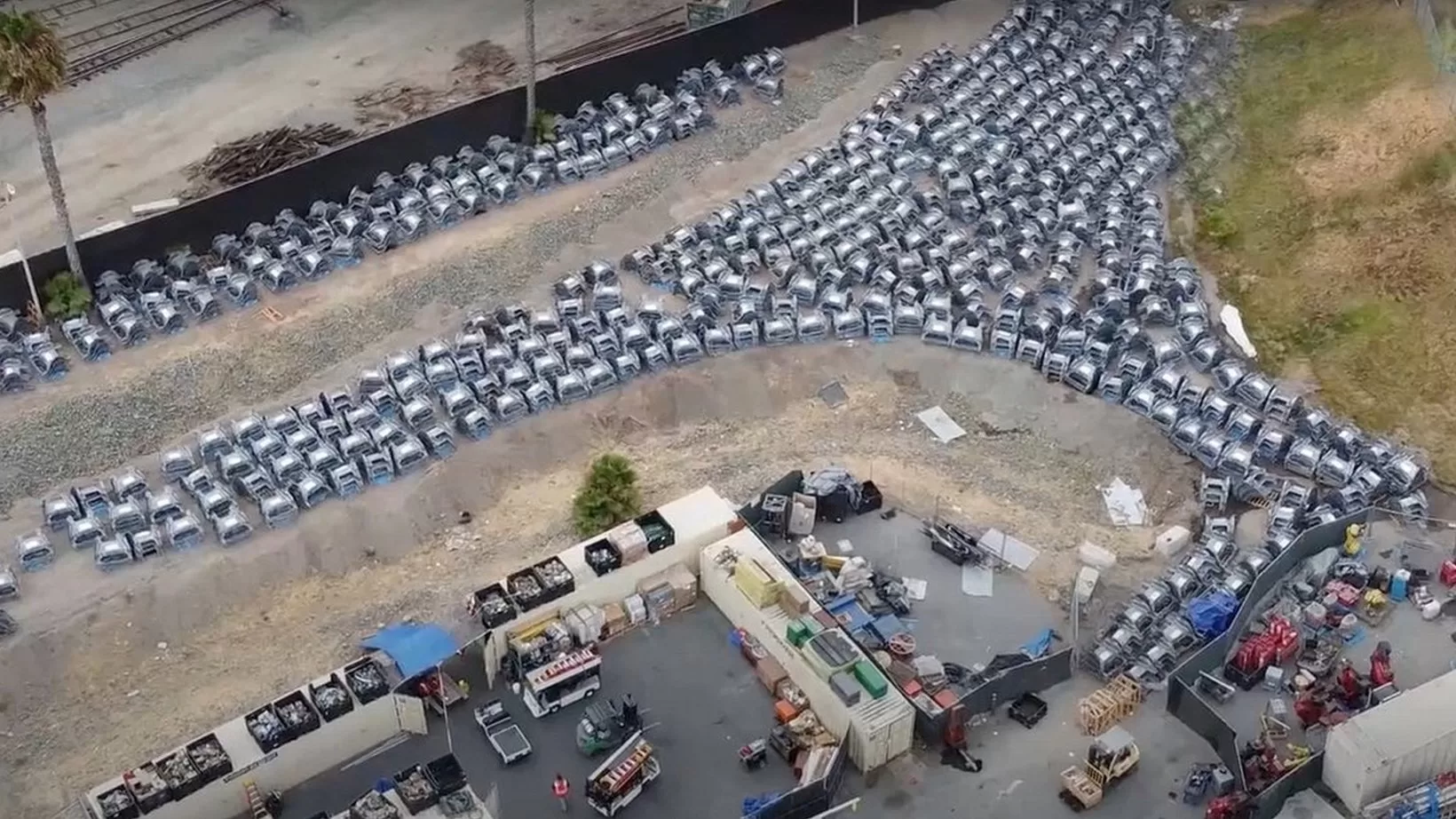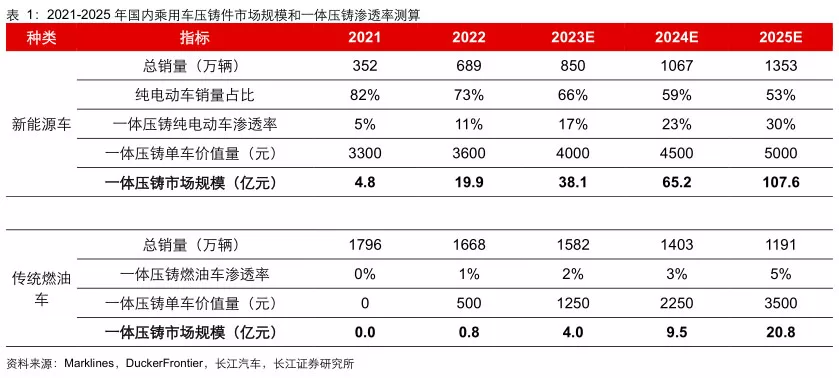Not long ago, Xiaomi Group Chairman Lei Jun announced the Xiaomi Million Dollar Annual Technology Award. In addition to the “Xiaomi Surging OS Architecture” winning the award, the “Integrated High-Pressure Die-Casting Technology” also won the highest award within Xiaomi’s internal specifications. Lei Jun stated that the two winning teams made important contributions to Xiaomi’s achievement of the “people, car, and home” full ecological cycle. The award-winning integrated die-casting technology is enough to show Xiaomi’s favor for this technology. At the Xiaomi SU7 technology conference, Lei Jun also specially promoted the self-developed 9100-ton integrated high-pressure die-casting equipment cluster system for Xiaomi cars. For a while, integrated die-casting technology became a hot search.
Integrated die-casting technology is not a new technology. In September 2020, Tesla introduced the concept of integrated die-casting in China. At that time, a giant die-casting machine weighing 410 tons integrated the rear frame of the Model Y, which was originally made up of more than 70 parts, in just 2 minutes. Today, Tesla uses large die-casting machines of 6000-9000 tons to produce the front and rear structures of the Model Y using integrated die-casting technology, greatly reducing production costs. Following the success of Tesla’s integrated die-casting technology, many domestic car companies have followed suit. After Tesla, companies such as NIO, Xiaopeng, Li Xiang, Wenshi, and Jikeng have entered the market and successively launched mass-produced models. Integrated die-casting technology has become a new direction for the competition among car companies. However, while integrated die-casting technology has significant advantages, the high investment costs, uncertain yield rates, and maintenance costs cannot be ignored, posing many challenges to its development. After all, even Tesla once produced 60% of large castings as scrap at the Gigafactory, causing a “casting graveyard” incident to become a hot topic. Now, integrated die-casting technology is making a comeback. Will it be just a marketing gimmick, or will it truly lead to a market breakthrough? Tesla: Pioneer of Integrated Die-Casting Technology In 2019 and 2021, Tesla applied for patents for molds and integrated energy-absorbing castings for large integrated die-cast components; In September 2020, Musk introduced the plan for integrated die-casting at Tesla’s Battery Day, and it was first used in the manufacturing of the Model Y’s rear floor assembly. It is worth mentioning that this can reduce the weight of the Model Y’s lower body assembly by 30%. Integrated die-casting refers to using a large-tonnage die-casting machine to cast multiple parts into one piece. Automotive manufacturing expert Zhang Feng stated that integrated die-casting breaks the traditional automotive manufacturing process, reducing the number of parts and avoiding complex connection processes. Zhang Feng further explained that the Model 3’s rear floor requires more than 70 stamped, extruded, and cast parts, while the Model Y using integrated die-casting technology only requires 2 integrated parts, reducing the number of weld points from approximately 800 to 50.
Data continues to rise, the Model Y produced at the Tesla Austin factory in 2022 requires only 1 component for the rear floor, and the front longitudinal beam position of the car body is also integrated casting. The number of body parts for the Model Y has been reduced from 171 to 2 compared to the Model 3, with more than 1600 fewer weld points and seams. The significant reduction in the number of parts and weld points undoubtedly leads to a substantial increase in production efficiency. Compared to traditional stamping and welding processes, it takes about 2 hours to complete a Tesla Model Y rear floor assembly, while the integrated casting technology of the Model Y rear floor assembly only takes 2 minutes to process. From a cost perspective, Tesla, which has already achieved economies of scale, has also seen a significant cost reduction effect from the integrated casting technology. Rough estimates show that after Tesla adopted large die-casting machines, the factory’s footprint decreased by 30%, labor costs for related automated production lines were reduced by 20%, and the production cost of the Model Y rear floor decreased by 40% after adopting integrated casting. Currently, the Tesla Model Y can achieve integrated casting for the rear floor and front longitudinal beams, and there is potential for integrated casting of the entire underbody, body structure components, and even the entire body in the future, which may further reduce costs. Because of Tesla’s advancement in integrated casting technology, it has prompted many car companies to actively lay out their plans. In Zhang Feng’s view, integrated casting technology, with its advantages of high production efficiency and low cost, is helping drive the development of lightweight vehicles and may even disrupt traditional car manufacturing processes, making it increasingly favored by major car companies. According to preliminary statistics from Gasgoo Auto, there are at least 10 car companies laying out plans for integrated casting technology. For example, the rear floor of the NIO ET5 uses integrated casting technology, and the front cabin and rear floor of the XPeng G6 and G9 also use integrated casting technology. Of course, companies such as Jinko, Volvo, and Volkswagen have also introduced integrated casting technology.
Some industry views believe that integrated die-casting technology may become the third manufacturing revolution in the automotive industry after Ford’s assembly line and Toyota’s lean production methods. Under the leadership of Tesla and the continuous exploration of the upstream and downstream of the industrial chain, the level of related technology is also constantly improving. For example, in terms of die-casting machine tonnage, it has increased from 6000 tons to 8000 tons, with Tesla using a 9000-ton integrated die-casting machine for the Cybertruck, and Xiaomi promoting its self-developed 9100-ton integrated die-casting machine. He Xiaopeng, chairman of XPeng Motors, revealed that the XPeng X9 uses a 12,000-ton integrated die-casting machine, and is also developing a 16,000-ton integrated die-casting machine. From the perspective of the development trend, the Chinese legion of the automotive integrated die-casting industry is gradually forming. As Zhang Feng said, “What Tesla has, we must also have, and we must surpass it on its basis.” High technological barriers, is cost reduction a false proposition? In the process of advancing a technology, there are always two sides. Integrated die-casting technology is no exception. While it has many advantages, technological barriers, cost issues, and subsequent maintenance problems are all insurmountable issues. From the perspective of technological barriers, integrated die-casting technology has unique advantages, but it also means a high technological difficulty challenge. “The hurdle that integrated die-casting has to overcome is the issue of product yield. If the product yield is too low, it is very difficult to increase production capacity,” said Wang Hui, a technical staff member of a certain car company, especially for large castings, the production difficulty is even more imaginable. Wang Hui explained with a more intuitive viewpoint, “Integrated die-casting is not as simple as making mooncakes, adding a filling to the mold, and completing it with one press.” Wang Hui stated that during the mold design phase, issues such as inert gas protection and vacuum hole removal must be addressed, followed by a series of steps involving cooling, heat treatment, and other issues. If the temperature, density, and liquid flow speed are not properly controlled, the die-casting accuracy will be affected.
Tesla’s Gigafactory in Giga Nevada has become a “casting graveyard”. According to Wang Hui, the difficulty of integrated die-casting technology is high. It took Tesla nearly a year to increase the floor yield of integrated die-casting from 30% to around 85%. The cost of a 9000-ton die-casting machine can reach 90 million yuan, and the cost may be even higher for machines with a capacity of tens of thousands of tons. The total investment cost of using integrated die-casting technology is not lower but higher. The use of integrated die-casting technology depends on high sales volume models to offset the cost. The high investment in integrated die-casting technology may be the reason why Tesla’s Model 3 has not yet adopted it. The promotion of integrated die-casting technology requires high sales volume models. The maintenance issue has always been a concern for consumers. At the end of 2021, the topic of “Tesla Model Y insurance premiums increased by 6,000 yuan (840$) overnight” became a hot topic. The attribution behind it may be related to Tesla’s integrated die-casting technology. A Tesla Model Y was reported to have rear-end collision, with extensive damage from the right rear door to the right side of the tailgate, and the estimated maintenance cost is as high as 200,000 yuan (28120$). Such high repair costs are not as cost-effective as buying a new car. In summary, integrated die-casting technology will also increase maintenance costs to a certain extent. Traditional models can be repaired through simple sheet metal work or replacement, with relatively controllable costs. However, once the integrated die-casting components are damaged, the problem of direct replacement arises, and the overall maintenance cost is inevitably high. Integrated die-casting technology requires a long-term perspective. In 2023, the Ministry of Industry and Information Technology and other departments issued the “Guiding Opinions on Promoting the High-Quality Development of the Foundry and Forging Industry”, which clearly stated that by 2025, advanced foundry and forging process technologies including integrated die-casting and lightweight high-strength alloy lightweighting will achieve industrial application, with breakthroughs in high-end castings and forgings as the focus, and by 2035, the overall level of the industry will enter the international advanced ranks. It can be seen that although integrated die-casting technology still has many problems, the development prospects are still very promising. Some views believe that Tesla, driven by capacity and cost needs, has led the wave of integrated die-casting. In the short term, integrated die-casting technology is still in its infancy, and the supporting industrial chain has not yet matured, including large-tonnage die-casting machines, high-performance heat-treatable materials, and the design and manufacturing of large molds adapted to integrated die-casting. Parts suppliers are also exploring integrated die-casting technology. In the medium term, Tesla has already established a first-mover advantage in the early stages of industrial development, while domestic car companies such as NIO and Xiaopeng are accelerating their transformation to integrated die-casting on the basis of traditional production lines, achieving better cost control and promoting industrial development together with suppliers. In the long run, integrated die-casting, as one of the most cost-effective ways to achieve aluminum lightweighting technology, may disrupt traditional automotive processes and become a core process for vehicle manufacturers, especially new energy vehicle companies. The view of Jiang Securities analysis believes that the integrated die-casting industry chain belongs to the secondary acceleration industry in the process of automotive lightweighting and new energy development, and is expected to become an important innovation that changes the industry ecosystem.
According to the forecast of Changjiang Securities, it is expected that the market size of integrated die-casting parts for domestic new energy vehicles and traditional fuel vehicles will reach 10.76 billion yuan and 2.08 billion yuan respectively by 2025, with a CAGR of about 75% for new energy passenger vehicles from 2022 to 2025. However, the trend of integrated die-casting sparked by Tesla has spread throughout the industry, and 2024 may be a big year for integrated die-casting technology. We can expect to see more integrated die-casting models on the market, and the market performance may be the best response to it.




